Pricing Guides & Dictionary of Makers Marks for Antiques & Collectibles

A few examples of appraisal values for
OCCUPIED JAPAN
Search our price guide for your own treasures
-
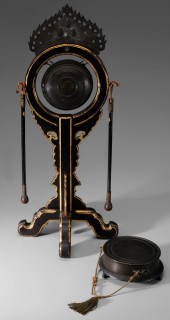 Two Japan
Two Japan
Two Japan
Two Japan -
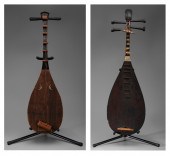 Two Japan
Two Japan
Two Japan
Two Japan -
 Two Japan
Two Japan
Two Japan
Two Japan -
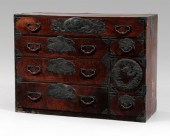 Japan
Japan
Japan
Japan -
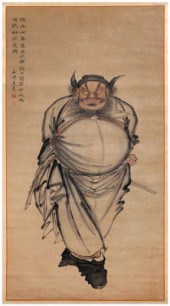 Japan
Japan
Japan
Japan -
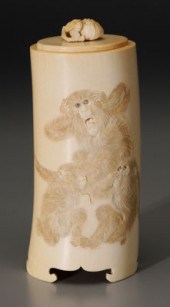 Japan
Japan
Japan
Japan -
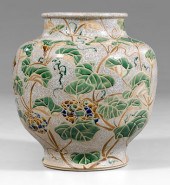 Japan
Japan
Japan
Japan -
 Group of Six Japan
Group of Six Japan
Group of Six Japan
Group of Six Japan -
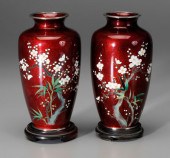 Pair Japan
Pair Japan
Pair Japan
Pair Japan -
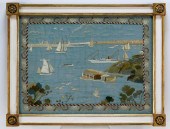 JAPANESE WWII SILK EMBROIDERED
JAPANESE WWII SILK EMBROIDERED PICTORIAL TEXTILE Japan,Circa 1940Pictorial textile of an active harbor with sailboats and a steamship surrounded by forestry with low flying seagulls and planes flying through a cloudy sky.
JAPANESE WWII SILK EMBROIDERED
JAPANESE WWII SILK EMBROIDERED PICTORIAL TEXTILE Japan,Circa 1940Pictorial textile of an active harbor with sailboats and a steamship surrounded by forestry with low flying seagulls and planes flying through a cloudy sky. -
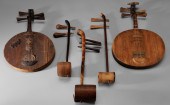 Group of Five Japan
Group of Five Japan
Group of Five Japan
Group of Five Japan -
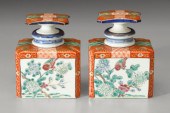 Pair Japan
Pair Japan
Pair Japan
Pair Japan -
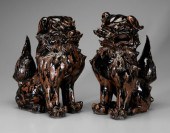 Pair Japan
Pair Japan
Pair Japan
Pair Japan -
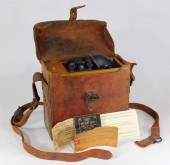 WWII CAPTURED JAPANESE FIELD
WWII CAPTURED JAPANESE FIELD TELEPHONE & EPHEMERA Japan,Circa 1943Museum collection label states "Japanese Field Telephone Captured on Solomon Island from a Japanese Officer, JULY 1943", additional tag states "PROPERTY OF COL. MATTHEW V. MCCORMICK, CRANSTON, R.I.", includes instructions for American soldiers to capture Japanese prisoners alive.
WWII CAPTURED JAPANESE FIELD
WWII CAPTURED JAPANESE FIELD TELEPHONE & EPHEMERA Japan,Circa 1943Museum collection label states "Japanese Field Telephone Captured on Solomon Island from a Japanese Officer, JULY 1943", additional tag states "PROPERTY OF COL. MATTHEW V. MCCORMICK, CRANSTON, R.I.", includes instructions for American soldiers to capture Japanese prisoners alive. -
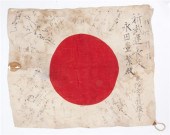 A Japanese World War II Flag
A Japanese World War II Flag bearing soldiers' signatures together with an associated wartime Honolulu Star Bulletin newspaper. Height 27 x width 32 inches.
A Japanese World War II Flag
A Japanese World War II Flag bearing soldiers' signatures together with an associated wartime Honolulu Star Bulletin newspaper. Height 27 x width 32 inches. -
 2PC WWII JAPANESE MILITARY HAT
2PC WWII JAPANESE MILITARY HAT MEATBALL FLAG GROUP Japan,1939-1945Includes a WWII Japanese military hat and WWII Japanese rising sun flag with hand written ink kanji.
2PC WWII JAPANESE MILITARY HAT
2PC WWII JAPANESE MILITARY HAT MEATBALL FLAG GROUP Japan,1939-1945Includes a WWII Japanese military hat and WWII Japanese rising sun flag with hand written ink kanji. -
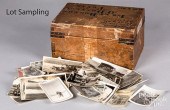 GROUP OF WWII PHOTOS, MOSTLY FROM
GROUP OF WWII PHOTOS, MOSTLY FROM JAPANGroup of WWII photos, mostly from Japan, in a wooden mail shipping box, 6 1/2" h., 12" w. Competitive in-house shipping is available for this lot. Condition: As expected wear.
GROUP OF WWII PHOTOS, MOSTLY FROM
GROUP OF WWII PHOTOS, MOSTLY FROM JAPANGroup of WWII photos, mostly from Japan, in a wooden mail shipping box, 6 1/2" h., 12" w. Competitive in-house shipping is available for this lot. Condition: As expected wear. -
 Photograph of Armed Japanese
Photograph of Armed Japanese Soldiers Russo-Japanese War Era Note that all the soldiers in this picture are holding model 1905 Cavalry swords. Picture measures 8.25 x 6.5". The small picture is an anti-American "Go home Yankees" from the 1950s. Condition: Very good.
Photograph of Armed Japanese
Photograph of Armed Japanese Soldiers Russo-Japanese War Era Note that all the soldiers in this picture are holding model 1905 Cavalry swords. Picture measures 8.25 x 6.5". The small picture is an anti-American "Go home Yankees" from the 1950s. Condition: Very good. -
 WWII Japanese Internment Camp
WWII Japanese Internment Camp Painting and Scrap Book. Watercolor and gouache painting on heavy craft paper with one-point perspective view of a WWII Japanese Internment Camp. Artist unknown. Included is a scrap book made by Minnie Yokoyama Itoi of her pre-WWII activities in the Seattle Japanese Methodist Church dated 1937-39. Also included are 2 ID cards for Nobuyuki Yokoyama of Seattle, Washington- a US DOJ immigration ID and a 1960's Washington State Drivers License. Painting measures 11x20.5''. Loose. Some scattered staining and fading, damage and pinhole at corners, and some creases on right edge.
WWII Japanese Internment Camp
WWII Japanese Internment Camp Painting and Scrap Book. Watercolor and gouache painting on heavy craft paper with one-point perspective view of a WWII Japanese Internment Camp. Artist unknown. Included is a scrap book made by Minnie Yokoyama Itoi of her pre-WWII activities in the Seattle Japanese Methodist Church dated 1937-39. Also included are 2 ID cards for Nobuyuki Yokoyama of Seattle, Washington- a US DOJ immigration ID and a 1960's Washington State Drivers License. Painting measures 11x20.5''. Loose. Some scattered staining and fading, damage and pinhole at corners, and some creases on right edge. -
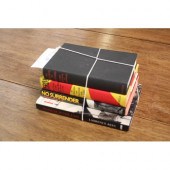 Good lot of 4 dealing with Japan in
Good lot of 4 dealing with Japan in WW2: Horror In The East, No Surrender, Zero!, The Knights of Bushido. More Information Excellent.
Good lot of 4 dealing with Japan in
Good lot of 4 dealing with Japan in WW2: Horror In The East, No Surrender, Zero!, The Knights of Bushido. More Information Excellent. -
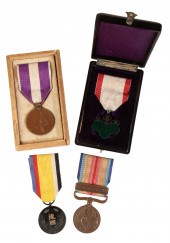 JAPAN. FOUR ORDERS AND MEDALS
JAPAN. FOUR ORDERS AND MEDALS Japan. Order of the Rising Sun (??? Kyokujitsu sho), VII class, in original fitted embossed wartime rio-nuri lacquer case of issue; Japan. First National Census Commemorative Medal, 1920, in fitted wooden case of issue, now lacking lid; Japan. Manchukuo. National Foundation Merit Medal, 1933 122; Japan. China Incident War Medal, 1937-1945 (4)
JAPAN. FOUR ORDERS AND MEDALS
JAPAN. FOUR ORDERS AND MEDALS Japan. Order of the Rising Sun (??? Kyokujitsu sho), VII class, in original fitted embossed wartime rio-nuri lacquer case of issue; Japan. First National Census Commemorative Medal, 1920, in fitted wooden case of issue, now lacking lid; Japan. Manchukuo. National Foundation Merit Medal, 1933 122; Japan. China Incident War Medal, 1937-1945 (4) -
 World War II POW Diaries of British
World War II POW Diaries of British Lieut. J.W. Hugo Held by Japanese A lot of two diaries written in captivity by British officer Lt. James W. Hugo while prisoner of the Japanese in World War II. ?These two journals written in Japanese notebooks contain not only Lt. Hugo's daily observances as a POW but detailed regimental operational records and an eyewitness history of the disastrous British defense of Malaya and Singapore.James William Hugo was a career British military officer whose regiment the 155th Field Regiment (Lanarkshire Yeomanry ) Royal Artillery was sent to Malaya in 1941 as part of the 11th Indian Division. The 155th was on the front lines from the first day of the invasion at Jitra. Unable to cover all directions Hugo describes how the British Indian and Australian forces were pushed back and flanked by the Japanese using captured boats to make beach landings in the rear of their positions forcing a retreat to Singapore. The 155th spiked their guns and surrendered on February 15th 1942 with the rest of the British army after running out of food and ammunition.Hugo spent eight months in Changi Prison Camp (the same POW camp as writer James Clavell and the inspiration for his book King Rat) before being sent to Taiwan on the hell ship England Maru on October 20 1942. Arriving on November 6 1942 they were immediately sent to the copper mines of the infamous Kinkaseki POW camp. At 52 years old Hugo was too old for the dangerous work in the mines and instead was put to work above ground. In August 1943 he was sent with other "surplus officers" to the POW camp at Shirakawa which had medical facilities. On February 27 1945 he was transported to Moji Japan via the hell ship Taiko Maru arriving March 5. ?When the ship docked he was transferred to the POW hospital there then sent to Miyata POW Camp 20B later renamed Miyata 4B. He remained here until liberated in September 1945.Hugo gave these diaries to an American serviceman on board the hospital ship USS Haven which treated POWs liberated in the Nagasaki area and transported them to Manila to be sent home. The cover of the first notebook is inscribed "Given to me in Nagasaki Japan by a POW we liberated. Sept '45" by that serviceman and is titled in Hugo's hand "Operations etc./ POW No. 1453/ JW Hugo."This first notebook contains the daily operations log of the 155th Field Regiment from December 8 1941 to the fall of Singapore. There is also a well-written 22-page narrative of the defense strategy for British Malaya from the 1920s which includes detailed accounts of the battles of the Japanese invasion and fall of Singapore. Hugo kept a roster of the 273 men of his regiment taken prisoner and killed in the Malaya Campaign as well as list of 188 men of the 155th Field Regiment who remained behind in Changi Prison when Hugo and 1000 others were sent aboard the hell ship England Maru to POW camps in Taiwan.He also wrote down the instructions that the Japanese forced the POWs to adhere to when writing letters home: 5 words for his own health 50 words inquiring about family's health 200 words covering "approved" subjects 100 words about American bombing Japanese cities. "Every point of the subject must be referred to as carefully and minutely as possible. The sentence shall be written in a letter form and in block letters as usual." Above this he wrote : "The more faithful in writing the more your treatment is improved."This notebook includes the list of men assigned to the 155th whose deaths in captivity Hugo was aware of and the cause of death (Beri Beri dysentery etc.) Shirakawa POW camp had a canteen that the officers were allowed to buy extra food and items from and is apparently where Hugo obtained the two notebooks he wrote these diaries in. He kept a running total of the POW pay he was given in yen and his expenditures in this first book.The second notebook is a daily diary starting May 12 1944 at Shirakawa POW camp. Hugo relates working in the farm building an earthen dam and learning to give massages to the seriously ill. A big focus of the diary is whether they got fed that day and what the food was. He notes his joy in getting the first boiled egg in 18 months in the summer of 1944 and on November 23 1944 writes "received an orange between 3 of us. What a treat!"?October 10 1944 marked the first air raid warning at Shirakawa. POWs were forced to lie on their beds until the all clear was sounded and punished if they even sat up. On Christmas Eve 1944 Hugo was allowed to compose a 40-word letter home which was sent by shortwave radio in Tokyo. By February 1945 the prisoners were getting little labor done due to daily air raids. Rumors were rampant that they were to be moved. The last entry from Shirakawa is February 18 1945. Hugo and 700 others were marched to Keelung in late February put aboard the hell ship Taiko Maru and sent to the Japanese home island of Kyushu arriving March 5 1945.Hugo's next diary entry is May 20 1945. he had become extremely sick probably from the voyage aboard Taiko Maru and had been in the POW hospital at Miyata. The following is an excerpt from his diary from May 1945:29th Tues. Cigarettes returned to us. We had a currant log. I was punched in the jaw and hit with the butt of a rifle in the middle of the back. I as far as I can make out did not salute the sentry correctly. Bye the way I was massaging a man's leg at the time the sentry passed.30th Fine day. No bread today.31st Thurs Fine day. Today I have been a captain for two years and become entitled to another rise in my pay.1st June Fine day. received 1 pkt Cigarettes (American). According to report a little dog that was running round camp in the morning was in the stew in the evening. If it was the taste was quite good.By July 1945 Capt Hugo was down to 46.2kg (101 pounds). Red Cross packages were kept by the Japanese and pieces were doled out for good behavior or special occasions or when food ran out. On August 16 rumors of the end of the war reached the camp:August 16 1945: There is a lot of excitement in camp today. Officers and men are not allowed to go out of the camp to work. According to rumour the war is over. Negotiations are going on between the powers and we should know in the course of a day or two the result. I pray to God that these rumours are true and that I shall soon be out of this horrible camp on my way home to Grace and the boys.17th It would appear that the peace rumours are true as we have not had a air raid for 48 hours. We have been issued with extra food by the Nipponese and as we are not working this is a sure sign that something extraordinary has happened. The Camp Cmdt has also released Red X stores and we have been issued with a tin of milk butter jam and meat. What a treat! I went to bed feeling quite satisfied with my food for the day.Over the next few days Allied planes begin dropping food and medicine to the area POW camps. On September 2 the camp commandant declares the POWs free and turns administration of the camp over to the POW officers. He remains at the camp and is nearly killed when a food barrel breaks loose from its parachute and crashes through the roof of his office nearly missing him as he ate his rice. Hugo notes:"We were sorry that it did not brain him. It would have been poetic justice if he had been brained with a tin of M & V as he has had such a lot of Red X stores that he should not have had."In addition to his diary this notebook also contains two "To Whom It May Concern" letters relating what has happened to him since being captured in case he didn't live to see the end of the war a monthly chart of his weight from October 1943 to September 1945 a copy of a letter he wrote to his family while POW and a tally of the air raids he witnessed in Taiwan.
World War II POW Diaries of British
World War II POW Diaries of British Lieut. J.W. Hugo Held by Japanese A lot of two diaries written in captivity by British officer Lt. James W. Hugo while prisoner of the Japanese in World War II. ?These two journals written in Japanese notebooks contain not only Lt. Hugo's daily observances as a POW but detailed regimental operational records and an eyewitness history of the disastrous British defense of Malaya and Singapore.James William Hugo was a career British military officer whose regiment the 155th Field Regiment (Lanarkshire Yeomanry ) Royal Artillery was sent to Malaya in 1941 as part of the 11th Indian Division. The 155th was on the front lines from the first day of the invasion at Jitra. Unable to cover all directions Hugo describes how the British Indian and Australian forces were pushed back and flanked by the Japanese using captured boats to make beach landings in the rear of their positions forcing a retreat to Singapore. The 155th spiked their guns and surrendered on February 15th 1942 with the rest of the British army after running out of food and ammunition.Hugo spent eight months in Changi Prison Camp (the same POW camp as writer James Clavell and the inspiration for his book King Rat) before being sent to Taiwan on the hell ship England Maru on October 20 1942. Arriving on November 6 1942 they were immediately sent to the copper mines of the infamous Kinkaseki POW camp. At 52 years old Hugo was too old for the dangerous work in the mines and instead was put to work above ground. In August 1943 he was sent with other "surplus officers" to the POW camp at Shirakawa which had medical facilities. On February 27 1945 he was transported to Moji Japan via the hell ship Taiko Maru arriving March 5. ?When the ship docked he was transferred to the POW hospital there then sent to Miyata POW Camp 20B later renamed Miyata 4B. He remained here until liberated in September 1945.Hugo gave these diaries to an American serviceman on board the hospital ship USS Haven which treated POWs liberated in the Nagasaki area and transported them to Manila to be sent home. The cover of the first notebook is inscribed "Given to me in Nagasaki Japan by a POW we liberated. Sept '45" by that serviceman and is titled in Hugo's hand "Operations etc./ POW No. 1453/ JW Hugo."This first notebook contains the daily operations log of the 155th Field Regiment from December 8 1941 to the fall of Singapore. There is also a well-written 22-page narrative of the defense strategy for British Malaya from the 1920s which includes detailed accounts of the battles of the Japanese invasion and fall of Singapore. Hugo kept a roster of the 273 men of his regiment taken prisoner and killed in the Malaya Campaign as well as list of 188 men of the 155th Field Regiment who remained behind in Changi Prison when Hugo and 1000 others were sent aboard the hell ship England Maru to POW camps in Taiwan.He also wrote down the instructions that the Japanese forced the POWs to adhere to when writing letters home: 5 words for his own health 50 words inquiring about family's health 200 words covering "approved" subjects 100 words about American bombing Japanese cities. "Every point of the subject must be referred to as carefully and minutely as possible. The sentence shall be written in a letter form and in block letters as usual." Above this he wrote : "The more faithful in writing the more your treatment is improved."This notebook includes the list of men assigned to the 155th whose deaths in captivity Hugo was aware of and the cause of death (Beri Beri dysentery etc.) Shirakawa POW camp had a canteen that the officers were allowed to buy extra food and items from and is apparently where Hugo obtained the two notebooks he wrote these diaries in. He kept a running total of the POW pay he was given in yen and his expenditures in this first book.The second notebook is a daily diary starting May 12 1944 at Shirakawa POW camp. Hugo relates working in the farm building an earthen dam and learning to give massages to the seriously ill. A big focus of the diary is whether they got fed that day and what the food was. He notes his joy in getting the first boiled egg in 18 months in the summer of 1944 and on November 23 1944 writes "received an orange between 3 of us. What a treat!"?October 10 1944 marked the first air raid warning at Shirakawa. POWs were forced to lie on their beds until the all clear was sounded and punished if they even sat up. On Christmas Eve 1944 Hugo was allowed to compose a 40-word letter home which was sent by shortwave radio in Tokyo. By February 1945 the prisoners were getting little labor done due to daily air raids. Rumors were rampant that they were to be moved. The last entry from Shirakawa is February 18 1945. Hugo and 700 others were marched to Keelung in late February put aboard the hell ship Taiko Maru and sent to the Japanese home island of Kyushu arriving March 5 1945.Hugo's next diary entry is May 20 1945. he had become extremely sick probably from the voyage aboard Taiko Maru and had been in the POW hospital at Miyata. The following is an excerpt from his diary from May 1945:29th Tues. Cigarettes returned to us. We had a currant log. I was punched in the jaw and hit with the butt of a rifle in the middle of the back. I as far as I can make out did not salute the sentry correctly. Bye the way I was massaging a man's leg at the time the sentry passed.30th Fine day. No bread today.31st Thurs Fine day. Today I have been a captain for two years and become entitled to another rise in my pay.1st June Fine day. received 1 pkt Cigarettes (American). According to report a little dog that was running round camp in the morning was in the stew in the evening. If it was the taste was quite good.By July 1945 Capt Hugo was down to 46.2kg (101 pounds). Red Cross packages were kept by the Japanese and pieces were doled out for good behavior or special occasions or when food ran out. On August 16 rumors of the end of the war reached the camp:August 16 1945: There is a lot of excitement in camp today. Officers and men are not allowed to go out of the camp to work. According to rumour the war is over. Negotiations are going on between the powers and we should know in the course of a day or two the result. I pray to God that these rumours are true and that I shall soon be out of this horrible camp on my way home to Grace and the boys.17th It would appear that the peace rumours are true as we have not had a air raid for 48 hours. We have been issued with extra food by the Nipponese and as we are not working this is a sure sign that something extraordinary has happened. The Camp Cmdt has also released Red X stores and we have been issued with a tin of milk butter jam and meat. What a treat! I went to bed feeling quite satisfied with my food for the day.Over the next few days Allied planes begin dropping food and medicine to the area POW camps. On September 2 the camp commandant declares the POWs free and turns administration of the camp over to the POW officers. He remains at the camp and is nearly killed when a food barrel breaks loose from its parachute and crashes through the roof of his office nearly missing him as he ate his rice. Hugo notes:"We were sorry that it did not brain him. It would have been poetic justice if he had been brained with a tin of M & V as he has had such a lot of Red X stores that he should not have had."In addition to his diary this notebook also contains two "To Whom It May Concern" letters relating what has happened to him since being captured in case he didn't live to see the end of the war a monthly chart of his weight from October 1943 to September 1945 a copy of a letter he wrote to his family while POW and a tally of the air raids he witnessed in Taiwan. -
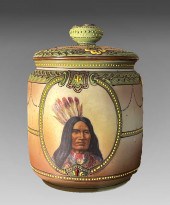 NIPPON INDIAN COVERED JAR
NIPPON INDIAN COVERED JAR
NIPPON INDIAN COVERED JAR
NIPPON INDIAN COVERED JAR -
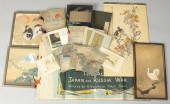 Group of Japanese Books &
Group of Japanese Books & Ephemera See website for full details. The Album Japan & Russia War Printed by. H. Gusokuya Tokyo Japan. Incomplete calendar of woodcuts. ''Japan's Year'' by Jullia D. Carrothers illus. by Japanese artists pub. in Tokyo. ''Sketches of Tokyo Life'' by Inouye Jukichi Torando Yokohama. 4 Tourist Library books. ''The Japanese Months Vol. II'' printed in Tokyo illustrated. 5 small illustrated books books of the seasons in French. Misc. prints w/c's.Dimensions: Max. 14'' x 28''E
Group of Japanese Books &
Group of Japanese Books & Ephemera See website for full details. The Album Japan & Russia War Printed by. H. Gusokuya Tokyo Japan. Incomplete calendar of woodcuts. ''Japan's Year'' by Jullia D. Carrothers illus. by Japanese artists pub. in Tokyo. ''Sketches of Tokyo Life'' by Inouye Jukichi Torando Yokohama. 4 Tourist Library books. ''The Japanese Months Vol. II'' printed in Tokyo illustrated. 5 small illustrated books books of the seasons in French. Misc. prints w/c's.Dimensions: Max. 14'' x 28''E -
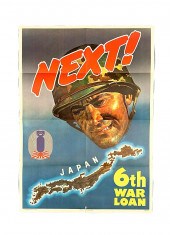 "NEXT! JAPAN" WORLD WAR II-ERA
"NEXT! JAPAN" WORLD WAR II-ERA WAR LOAN POSTER 1940S 28” X 20”. UNFRAMED."NEXT! JAPAN" WORLD WAR II-ERA WAR LOAN POSTER, 1940s, Artist James R. Bingham (New York/Florida, 1917-1971). For the sixth war loan. Dimensions: 28" x 20". Unframed.
"NEXT! JAPAN" WORLD WAR II-ERA
"NEXT! JAPAN" WORLD WAR II-ERA WAR LOAN POSTER 1940S 28” X 20”. UNFRAMED."NEXT! JAPAN" WORLD WAR II-ERA WAR LOAN POSTER, 1940s, Artist James R. Bingham (New York/Florida, 1917-1971). For the sixth war loan. Dimensions: 28" x 20". Unframed. -
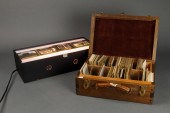 A GROUP OF PROJECTOR SLIDES ON
A GROUP OF PROJECTOR SLIDES ON JAPAN A group of projector slides on Japan.
A GROUP OF PROJECTOR SLIDES ON
A GROUP OF PROJECTOR SLIDES ON JAPAN A group of projector slides on Japan. -
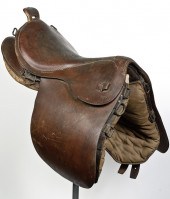 Japanese WWII Military Cavalry
Japanese WWII Military Cavalry Saddle The Japanese soldiers captured hundreds perhaps thousands of British saddles in Singapore and all throughout Burma and put them to use. They also copied the British saddle. This saddle is void of any arsenal stampings. Condition: Very good.
Japanese WWII Military Cavalry
Japanese WWII Military Cavalry Saddle The Japanese soldiers captured hundreds perhaps thousands of British saddles in Singapore and all throughout Burma and put them to use. They also copied the British saddle. This saddle is void of any arsenal stampings. Condition: Very good. -
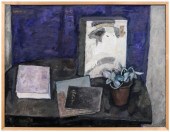 Anatoly Nikitch (Russian, born
Anatoly Nikitch (Russian, born 1918), Japan
Anatoly Nikitch (Russian, born
Anatoly Nikitch (Russian, born 1918), Japan -
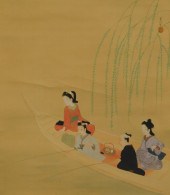 JAPANESE RIVER FISHING HANGING WALL
JAPANESE RIVER FISHING HANGING WALL SCROLL Japan,Three geisha women and one samurai man relax on a boat with calligraphy and a collector's mark to the upper right.
JAPANESE RIVER FISHING HANGING WALL
JAPANESE RIVER FISHING HANGING WALL SCROLL Japan,Three geisha women and one samurai man relax on a boat with calligraphy and a collector's mark to the upper right. -
 US WWII Homefront Newspapers Lot of
US WWII Homefront Newspapers Lot of Twelve V-E Day Japan Expected to Quit Today Pearl Harbor Disaster Blamed on High Officers and nine Cincinnati Enquirer art gravure sections on the war effort. Condition: Very good.
US WWII Homefront Newspapers Lot of
US WWII Homefront Newspapers Lot of Twelve V-E Day Japan Expected to Quit Today Pearl Harbor Disaster Blamed on High Officers and nine Cincinnati Enquirer art gravure sections on the war effort. Condition: Very good. -
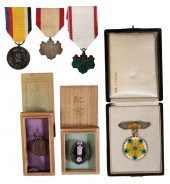 JAPAN. SIX ORDERS, MEDALS AND
JAPAN. SIX ORDERS, MEDALS AND BADGES Japan. Order of the Rising Sun (??? Kyokujitsu sho), VII class, rare privately-made World War II-era version with unenamelled reverse; Japan. Order of the Rising Sun (??? Kyokujitsu sho), VIII class; Japan. Manchukuo. National Foundation Merit Medal, 1933; Japan. Early Maritime Medallion with stickpin, in wooden case of issue;
JAPAN. SIX ORDERS, MEDALS AND
JAPAN. SIX ORDERS, MEDALS AND BADGES Japan. Order of the Rising Sun (??? Kyokujitsu sho), VII class, rare privately-made World War II-era version with unenamelled reverse; Japan. Order of the Rising Sun (??? Kyokujitsu sho), VIII class; Japan. Manchukuo. National Foundation Merit Medal, 1933; Japan. Early Maritime Medallion with stickpin, in wooden case of issue; -
 A JAPANESE WORLD WAR II HELMET WITH
A JAPANESE WORLD WAR II HELMET WITH US SOLDIERS SIGNATURES A captured Japanese World War II cast iron helmet covered with signatures of US soldiers in white paint, a painted rising sun flag and a possible bullet hole, 10.5"d
A JAPANESE WORLD WAR II HELMET WITH
A JAPANESE WORLD WAR II HELMET WITH US SOLDIERS SIGNATURES A captured Japanese World War II cast iron helmet covered with signatures of US soldiers in white paint, a painted rising sun flag and a possible bullet hole, 10.5"d -
 Kiyoshi Saito (1907-1992 Japan)
Kiyoshi Saito (1907-1992 Japan) Tosyodai-Ji Nara (C)
Kiyoshi Saito (1907-1992 Japan)
Kiyoshi Saito (1907-1992 Japan) Tosyodai-Ji Nara (C) -
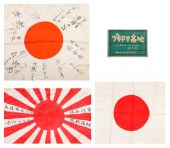 A (LOT OF 4) WORLD WAR II
A (LOT OF 4) WORLD WAR II JAPANESE SILK FLAGS AND A JAPANESE CARTOON. A (lot of 3) World War II Japanese silk flags: one of sun with radiating rays hoisted with leather tabs and cord ties; (2) with printed red sun, one with written inscriptions; together with a Japanese cartoon book on war, Provenance: The Holt Military Museum, Lafayette, California
A (LOT OF 4) WORLD WAR II
A (LOT OF 4) WORLD WAR II JAPANESE SILK FLAGS AND A JAPANESE CARTOON. A (lot of 3) World War II Japanese silk flags: one of sun with radiating rays hoisted with leather tabs and cord ties; (2) with printed red sun, one with written inscriptions; together with a Japanese cartoon book on war, Provenance: The Holt Military Museum, Lafayette, California -
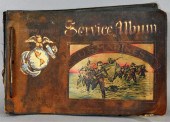 WWII MARINE PACIFIC CAMPAIGN
WWII MARINE PACIFIC CAMPAIGN PHOTO ALBUM W/ NUDES Japan, United States,Circa 1943Dated 1943 photograph album of a U.S. Marine's service during the Pacific Campaign in Japan. Includes 70 photographs identified Kauai, Okinawa, and other locations capturing soldiers in uniform, casual with natives, nude women, and scenic landscapes.
WWII MARINE PACIFIC CAMPAIGN
WWII MARINE PACIFIC CAMPAIGN PHOTO ALBUM W/ NUDES Japan, United States,Circa 1943Dated 1943 photograph album of a U.S. Marine's service during the Pacific Campaign in Japan. Includes 70 photographs identified Kauai, Okinawa, and other locations capturing soldiers in uniform, casual with natives, nude women, and scenic landscapes. -
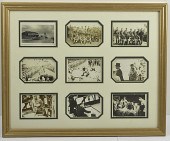 US WWII Framed Photo Group of
US WWII Framed Photo Group of Japanese Surrender Framed nine photo array of the Japanese surrender aboard ?the USS Missouri. First ?photo is an aircraft carrier;?the USS Missouri is a battleship. Condition: Very good.
US WWII Framed Photo Group of
US WWII Framed Photo Group of Japanese Surrender Framed nine photo array of the Japanese surrender aboard ?the USS Missouri. First ?photo is an aircraft carrier;?the USS Missouri is a battleship. Condition: Very good.
...many more examples with full details are available to our members - Learn more


